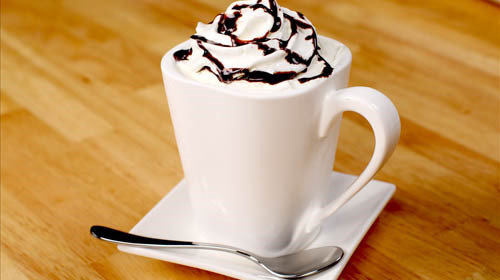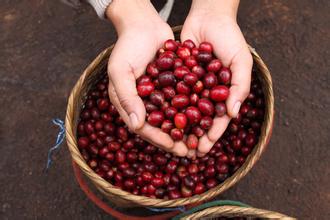It is difficult to tell the true from the false of matcha-flavored food. Four tricks teach you how to taste real matcha.
In recent years, matcha-flavored food has become increasingly popular, with matcha-flavored biscuits all over the shelves in supermarkets and exquisite matcha mousse in cake shops that make sweet foodies move their index fingers. However, experts warn that many matcha foods on the market actually add only green tea powder, not only that, in order to ensure taste and color, businesses also add flavors and pigments. Although matcha and green tea powder are made from green tea, their production processes and processes are very different.
Li Yinong, a senior tea artist, said that this is because some businesses directly sell green tea powder as matcha. Matcha and green tea powder are made of green tea, but they are not the same concept. Matcha generally refers to green tea grinding powder particles, matcha is first of all life taste tea, can also be used as food raw materials. Green tea powder is mostly used in food raw materials.
"the price of authentic matcha is several times or even dozens of times higher than that of green tea powder. The price of authentic matcha in the market is usually around 1000 yuan / jin. The traditional production process of matcha requires the use of grinding technology, specific varieties of green tea need to be ground into ultra-fine powder, and then steam sterilization. It's not surprising that a better variety sells for 5000 yuan. The process of ordinary green tea powder is very simple, its raw materials are basically ordinary fried green, using the instantaneous crushing method of a metal crusher, the particles are much thicker than matcha, and the price ranges from dozens of yuan to several hundred yuan per jin. " Introduced by Li Yinong.
There are no specific regulations on matcha standards in China, and there is no quality classification of matcha powder in China. "at present, there is no corresponding national standard for matcha. Various manufacturers produce according to their own enterprise standards and distinguish the good from the bad by particle size. The finer the particles, the better the quality."
Whether it is green tea powder or matcha, it is very easy to oxidize when it is added as a food. after oxidation, it will appear yellow, and the aroma will fade. In order to ensure the taste and color of food, many merchants may add pigments in the production process. In the process of food processing, the color protection can be carried out by adding vitamins and other processes to prolong the natural oxidation process of green tea powder or matcha, but even if the color protection process is carried out, the time of antioxidation is very limited. In recent years, with the popularity of matcha, the proportion of matcha products has increased rapidly. If you see cakes, candies or drinks with particularly bright colors, emerald green or strong aroma, pigments and flavors are likely to be added, and consumers should be careful to buy them.
How to distinguish matcha from green tea powder
1. Color: matcha is dark green or dark green, green tea powder is grass green.
two。 Taste: matcha is not astringent and less bitter, while green tea powder is slightly bitter.
3. Aroma: matcha shows the aroma of seaweed and zongye, while green tea powder is grassy.
4. Fineness: matcha fineness up to 2 microns, smeared on the back of the hand can all enter the pores. Green tea powder is much thicker than matcha and has a strong sense of friction on the back of the hand.
Beijing Times 2014-10-23
Important Notice :
前街咖啡 FrontStreet Coffee has moved to new addredd:
FrontStreet Coffee Address: 315,Donghua East Road,GuangZhou
Tel:020 38364473
- Prev

Let's talk about what mocha coffee is. Is it espresso or specialty coffee beans?
In 575 AD, the first coffee bean took root far away from its native Ethiopia and across the Red Sea in Yemen. It became mocha coffee, and it has since launched the coffee industry all over the world. What is mocha? There are many answers. Some people say mocha means place of origin. Some people say mocha means sweet chocolate coffee. In fact, both views are biased.
- Next

Distinguishing coffee beans and the grading of coffee beans teaches you how to distinguish coffee beans.
● distinguishes the key names and specifications of coffee beans the name of the port of export of ● can tell the shipping route from the name of the port of exit marked. Coffee from the same origin or the same brand has a certain route, so it is also exported from the same port. For example, if it is marked "Brazil." "Santos" means that this is coffee exported from Santos, with the exception of those marked "mocha".
Related
- What is the meaning of lactic acid fermentation with coffee bean treatment?
- How to judge the state of foam by sound?
- How does the latte pull out the unicorn pattern? Come to get for a little trick to improve the flower pull!
- Will flower pulling affect the taste of the latte?
- Do you know the history of coffee?
- The difference between honey treatment and sun washing what is raisin honey treatment?
- What kind of milk can a novice use to make coffee foam to keep the foam longer? The correct method and skills of milking tutorial sharing
- Why do washed coffee beans taste sour? Flavor characteristics of washed Coffee
- Introduction to the skill of how to practice the size and height of water injection around the circle of hand-brewed coffee
- How do beginners practice coffee flower drawing from scratch?

